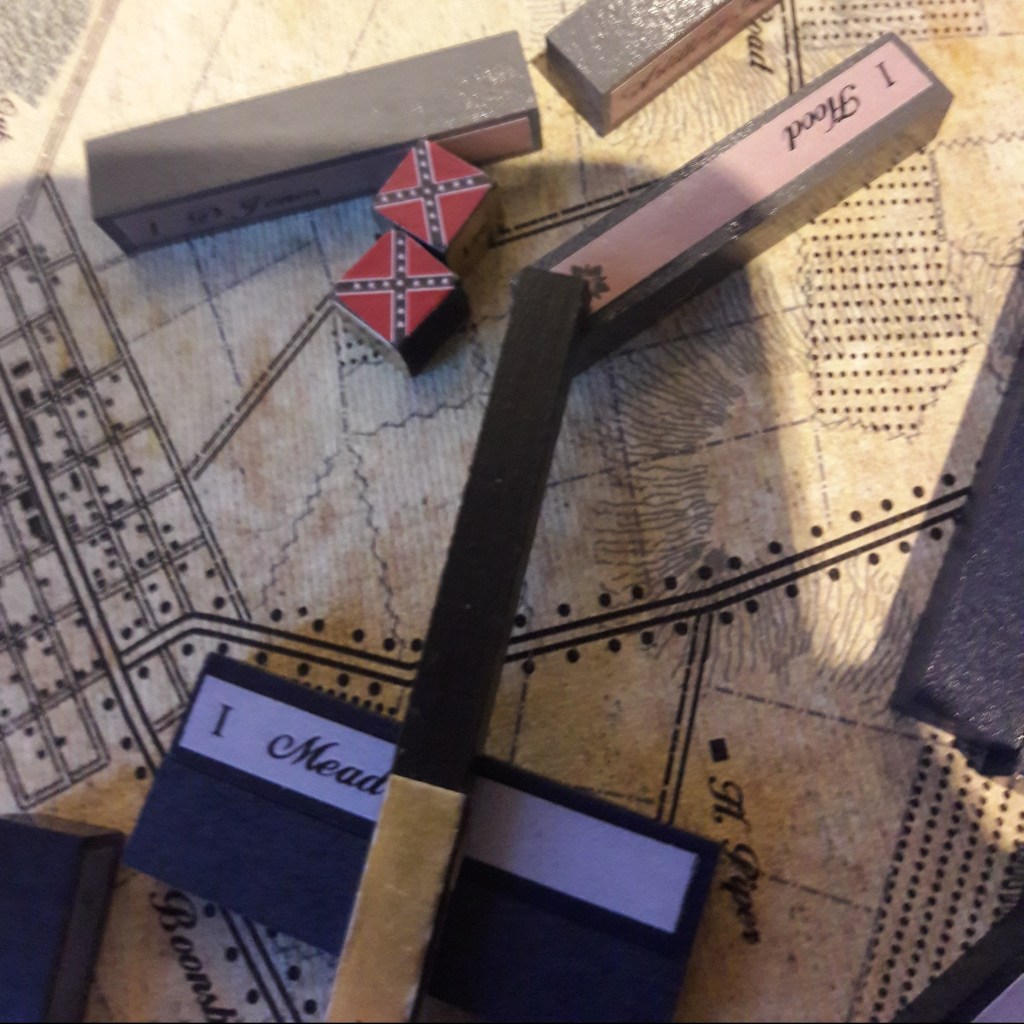This is a work in progress, posted so others may view and give feedback. The intent of this campaign system is to allow the play of a campaign game that gives broader scope to games then simply to win that one battle. This is not historical.
Campaign turn order:
Winter / Orders-Move Armies-Combat-Build
Spring / Orders-move BT-Move Armies-Combat
Summer / Orders-move BT-Move Armies-Combat
Fall / Orders-move BT-Move Armies-Combat
Orders – To move, simply write the name of the adjacent node that the HQ is moving to.
There is no limit to the number of HQs moving into a Node.
All BT may move each turn, but only one BT may move between any two nodes per turn.
Move – HQs and LPs must attempt to follow the orders they are given, as fully as possible. Orders that contravene the rules count as No Orders.
Units under No Orders may not move, and if attacked will automatically retreat, if able, or grant the enemy one Surprise turn (only the enemy draws chits!), if a bettle is fought..
Orders – HQs may be ordered to Move to another Node, or Hold the Node they occupy. A unit may be given No Orders, which mean they remain in their Node, but are expected to retreat and not risk their Army if attacked.
Build – Build one Corps and one Logistics Point (LP), per Build Area you control. Some, none, or all, must be placed in any home Build area.
Corps Builds – One Corps per Build Phase may be Cavalry.
Infantry Corps – 1 hussar, 3 infantry, 1 artillery.
Cavalry Corps – 1 horse artillery, 1 hussar, 1 dragoon, 1 cuirassier.
Reorganizing – During the Build phase, the armies may be reorganized. All blocks in an area may be reassigned to different HQs. Additionally:
2 regular blocks of any type may be combined into 1 Elite block and 1 militia block, of the same type.
1 regular block of any type may be swapped for 2 militia of the same type.
Orders – HQs in the same area may first reorganize, blocks may be assigned to any HQ, and HQs may be created or eliminated as needed. An HQ must contain at least 2 blocks. A new HQ begins with a rating of 3. If its command contains any Elite, +1 to the score. Each player gets one Army HQ with a rating of 4 to begin the game. After any battle, a player who wins a decisive victory gets to increase a single HQ’s rating by +1, to a maximum of 5.
Setting up the map
The map is a series of interconnected Nodes. Each Bold Node is worth 1 Build.
Each node may normally only hold one LP. A node with a Supply Depot may contain 3 LPs. Each home Node contains a Supply Depot. A Supply Depot may be created on any Node by replacing a LP with a depot Cube. If an army begins its turn with an enemy SD/BT, it may Capture an LP if it doesn’t already have one, it may move one remaining LP (if able) to an adjacent Node, and it must destroy the excess.
Setting up a battle
All of the HQs on a single node compose an army. Each army can have one LP on its node. LPs may only move one at a time between nodes.
Idea: 1 Logistics Point is worth 3 BTs. Only one LP per Node. No Depots. So 1 LP can move with an army, but you may never have more than one LP per Node, except when multiple armies enter the same Node. As soon as an army Occupies the same node as a LP, it may convert the LP to 3 BTs. After a battle, the BTs are considered consumed.
When two armies end their turn on the same node, a battle will ensue. If opposing armies would meet on a road connecting two nodes, the side with Cavalry Scouting Superiority (CSS) drives the opposing army back. If neither side has CSS, compare the total number of infantry and cavalry blocks, if still equal, highest die roll decides. The army without CSS must setup within 1 mounted move of the side of the map they entered from. The side with CSS may setup within 1/3 of the the side they enter from, or may enter on turn one along either of the remaining sides.
If one army is attacked while Occupying a node, it begins set up anywhere on the map, at least 1/3 mounted move from any map edge. The side it entered from is its base side. The attacking force must enter along the opposite side unless it has CSS, in which case it may enter anywhere on any of the three non enemy base sides, and may begin within 1/3 Mounted move of the base side it enters the node from, remaining 1/3 mounted move away from any enemy forces.
If multiple friendly armies are entering from different Nodes, one army is considered the main army (players choice) and the remaining armies enter along the Node edge they are arriving from, on a turn determined by a D6. CSS makes no difference for additional armies, so it may be in your best interest to consider your army with the most cavalry to be your main force.
Cavalry Scouting Superiority (CSS) – Points are awarded based on total cavalry blocks:
Hussars 3 per block
Dragoons 2 per block
Cuirassiers 0 points (Cuirassiers were not used for scouting), Hussars are better at scouting, but dragoons are better on the battlefield.
